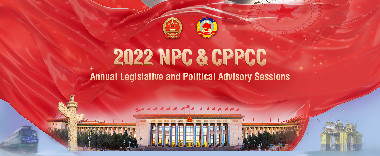Reforms to put SOEs in key role for initiative
China's new round of reform of its State-owned enterprises will further encourage them to be the country's major force driving the Belt and Road Initiative via win-win projects, high operational efficiency and flexible business layouts, political advisers and business leaders said on March 10.
They made the remarks after Xiao Yaqing, chairman of the State-owned Assets Supervision and Administration Commission, said on March 9 that China would expand mixed ownership reform to more than 100 SOEs, after the country had selected 50 SOEs in three groups to conduct the pilot reform in fields including power, energy, civil aviation, telecommunications and defense, since 2016.
Wilson Pang, a partner at auditing and consultancy firm KPMG, said most of recent SOE reform programs had a much wider coverage and emphasized the importance of corporate governance, risk management, performance appraisal and strategic planning.
To maximize their operational and strategic strengths at the same time for strong and sustainable growth, Pang said "bringing in and going global" can be part of the strategy for SOEs to remain competitive.
His opinion was shared by Yan Bin, a member of the 13th National Committee of the Chinese People's Political Consultative Conference and co-chair of the Belt and Road General Chamber of Commerce (Hong Kong), who said the tangible development of the Belt and Road Initiative and the Guangdong-Hong Kong-Macao Greater Bay Area would further enhance the earning capacity of SOEs.
The country's top State-owned assets regulator also said that projects undertaken by China's SOEs under the BRI have been faring well and are playing increasingly important roles, its officials said at a news conference during the annual legislative session on March 9.
The initiative has been welcomed by a growing number of countries and regions as the BRI projects have helped create jobs and develop local economies, said Xiao from SASAC, adding that SOEs should abide by internationally accepted rules as well as local laws and regulations in BRI projects, to ensure their quality, sustainability and long-term profitability.
Zhang Yuyan, another CPPCC member and a senior researcher of economics at the Chinese Academy of Social Sciences, said the government previously paid more attention to the scale of a SOE's revenue, but in the next stage more attention will be placed on SOEs' returns in areas such as net assets, revenue margin, investment in research and development, and added value.
"Therefore, SOEs will not only be leaders in terms of revenue scale, but also in terms of their efficiency and development quality," said Zeng Qinghong, a deputy to the 13th National People's Congress and chairman of Guangzhou Automobile Group Co.
The operating revenue of China's SOEs rose 3.9 percent year-on-year in the first two months of this year, while profits increased by 15.3 percent, according to the SASAC.
Centrally administered SOEs recorded sales revenue of 29.1 trillion yuan ($4.33 trillion) in 2018, with net profits of 1.2 trillion yuan, a growth of 15.7 percent year-on-year, while the average debt ratio declined 0.6 percentage points.



